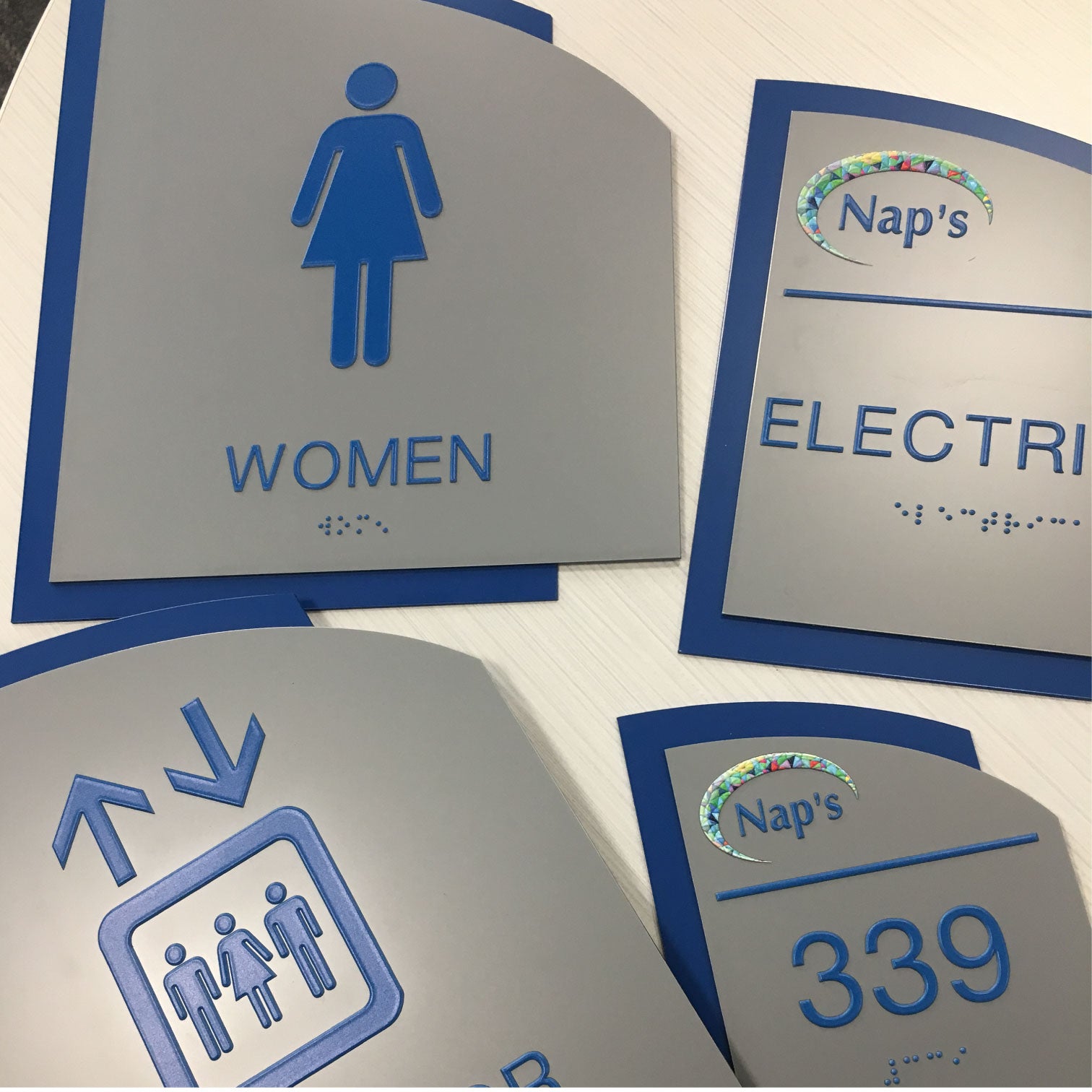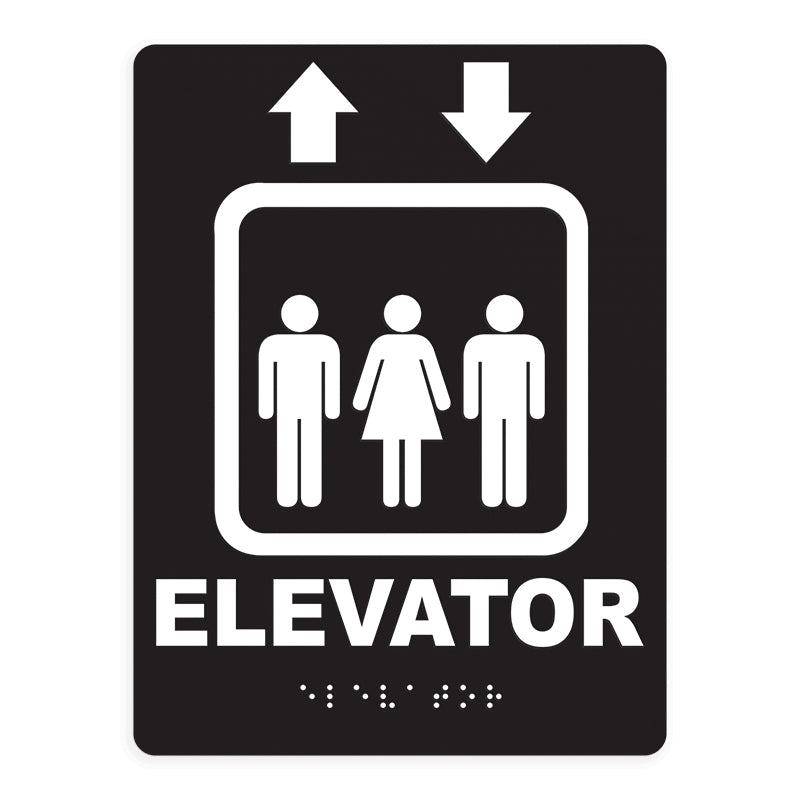ADA Signs: Important Devices for Inclusive Environments
ADA Signs: Important Devices for Inclusive Environments
Blog Article
Exploring the Key Features of ADA Indicators for Improved Availability
In the world of access, ADA indications serve as silent yet effective allies, guaranteeing that rooms are navigable and comprehensive for people with specials needs. By incorporating Braille and responsive elements, these indications damage barriers for the visually impaired, while high-contrast shade plans and readable font styles provide to varied visual demands.
Value of ADA Compliance
Making sure conformity with the Americans with Disabilities Act (ADA) is vital for fostering inclusivity and equivalent access in public areas and work environments. The ADA, established in 1990, mandates that all public facilities, employers, and transport services accommodate individuals with specials needs, guaranteeing they delight in the very same civil liberties and opportunities as others. Compliance with ADA standards not only meets lawful obligations but additionally improves an organization's track record by showing its dedication to variety and inclusivity.
One of the essential facets of ADA conformity is the application of accessible signs. ADA signs are designed to guarantee that individuals with handicaps can easily browse via areas and structures. These indications need to follow certain standards concerning size, font, color comparison, and placement to ensure exposure and readability for all. Appropriately carried out ADA signage assists remove obstacles that people with impairments typically encounter, thus promoting their independence and self-confidence (ADA Signs).
Furthermore, sticking to ADA policies can mitigate the risk of prospective fines and legal effects. Organizations that stop working to follow ADA standards may deal with charges or suits, which can be both destructive and economically burdensome to their public picture. Therefore, ADA compliance is indispensable to cultivating an equitable atmosphere for everybody.
Braille and Tactile Aspects
The incorporation of Braille and responsive elements into ADA signage embodies the principles of accessibility and inclusivity. These functions are crucial for individuals who are visually damaged or blind, allowing them to navigate public areas with greater self-reliance and self-confidence. Braille, a tactile writing system, is essential in supplying created information in a style that can be conveniently viewed with touch. It is normally positioned below the corresponding text on signs to ensure that individuals can access the info without aesthetic support.
Responsive aspects prolong beyond Braille and include increased personalities and symbols. These parts are created to be noticeable by touch, permitting people to determine space numbers, washrooms, leaves, and various other essential locations. The ADA establishes particular guidelines concerning the size, spacing, and placement of these responsive components to optimize readability and guarantee uniformity throughout different environments.

High-Contrast Color Design
High-contrast color design play a crucial duty in boosting the visibility and readability of ADA signs for individuals with aesthetic disabilities. These systems are necessary as they take full advantage of the difference in light reflectance between message and history, making sure that signs are quickly discernible, also from a distance. The Americans with Disabilities Act (ADA) mandates making use of particular shade contrasts to fit those with minimal vision, making it an important aspect of compliance.
The efficiency of high-contrast colors exists in their ability to stand out in different lighting conditions, consisting of dimly lit environments and locations with glow. Usually, dark text on a light background or light text on a dark background is employed to accomplish optimum comparison. Black text on a yellow or white history offers a plain aesthetic distinction that aids in quick recognition and comprehension.

Legible Fonts and Text Size
When thinking about the style of ADA signs, the option of understandable typefaces and appropriate text size can not be overstated. These components are critical for ensuring that signs are easily accessible to individuals with aesthetic impairments. The Americans with Disabilities Act (ADA) mandates that fonts must be sans-serif and not italic, oblique, script, highly ornamental, or of unusual form. These requirements help guarantee that the text is quickly understandable from a distance and that the personalities are distinct to diverse target markets.
The dimension of the message additionally plays a critical role in accessibility. According to ADA standards, the minimum text elevation must be 5/8 inch, and it ought to increase proportionally with viewing range. This is particularly essential in public rooms where signage demands to be checked out quickly and accurately. Consistency in text dimension adds to a cohesive aesthetic experience, assisting people in navigating environments successfully.
In addition, spacing in between lines and letters is integral to clarity. Appropriate spacing stops personalities from appearing crowded, boosting readability. By adhering to these standards, designers can considerably improve accessibility, making certain that signs offers its intended function for all people, despite their visual abilities.
Effective Positioning Methods
Strategic positioning of ADA signs is essential for optimizing accessibility and making certain compliance with legal standards. Properly positioned indicators direct individuals with disabilities effectively, facilitating navigation in public areas. Trick considerations consist of proximity, presence, and elevation. ADA standards stipulate that signs ought visit this site right here to be look at this site installed at an elevation between 48 to 60 inches from the ground to ensure they are within the line of view for both standing and seated people. This conventional height range is essential for inclusivity, making it possible for wheelchair users and individuals of varying elevations to access details easily.
Furthermore, signs must be placed adjacent to the lock side of doors to allow very easy recognition prior to entrance. Consistency in sign placement throughout a center improves predictability, lowering confusion and boosting general user experience.

Final Thought
ADA indicators play a vital role in promoting ease of access by incorporating functions that attend to the requirements of individuals with specials needs. These aspects collectively promote an inclusive environment, underscoring the importance of ADA compliance in making certain equal gain access to for all.
In the realm of access, ADA indicators serve as quiet yet powerful allies, guaranteeing that spaces are comprehensive and navigable for individuals with impairments. The ADA, established in 1990, mandates that all public facilities, employers, and transport services suit people with disabilities, ensuring they delight in the very same rights and opportunities as others. ADA Signs. ADA signs are developed to ensure that individuals with specials needs can conveniently browse with spaces and buildings. ADA guidelines specify that indicators must be placed at an elevation in between 48 to 60 inches from the ground to guarantee they are within the line of view for both standing and seated people.ADA signs play a vital duty in promoting ease of access by integrating features read more that attend to the requirements of individuals with impairments
Report this page